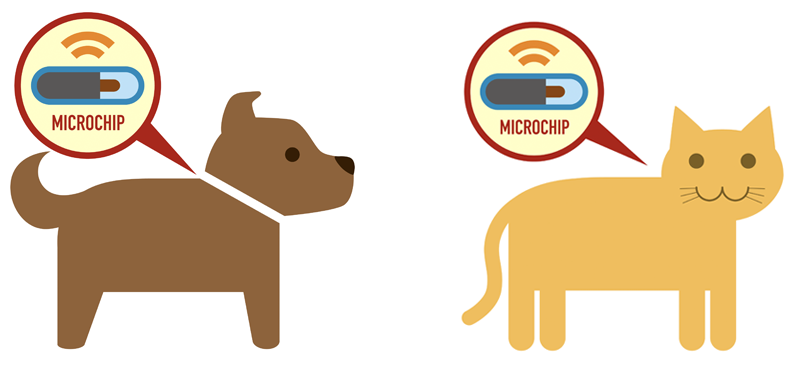1 in 3 pets go missing each year. Without ID, 90% of those lost pets don’t come home. We don’t want any of our pet owners to deal with losing a beloved pet, which is why we’re raising awareness!
If something were to happen to your pet, this is the easiest way to help find their way home. Keep reading for important facts and answers to and how to celebrate national microchipping month.
What is a Microchip?
A microchip refers to a diminutive electronic RFID (Radio Frequency Identification) chip enclosed in a small glass cylinder, resembling the size of a grain of rice. Notably, the microchip operates without a battery. Instead, it is activated by a scanner that is passed over the designated area, utilizing radio waves to activate the chip. As a result, the chip transmits its unique identification number to the scanner, which subsequently displays the number on a screen.
Importantly, the pertinent information about your pet is registered for its entire lifetime on a National Pet Identification database. This comprehensive database enables veterinary hospitals and shelters across the country to assist in the search for your pet in the event that they go missing.
What’s the Cost Associated with Microchipping?
If you adopted your pet from a shelter or purchased them from a breeder, there’s a possibility that they may already have a microchip. To confirm this, I recommend revisiting your pet adoption paperwork or having your pet scanned for a microchip during your next visit to the veterinarian. This will unveil the unique microchip ID number, which you can then register.
However, if you’re aware that your pet isn’t already microchipped, it’s worth noting that the average cost for a microchip is $50. While this may seem like an investment, it’s important to consider the long-term benefits. Unlike other pet expenses, microchips do not require routine care, maintenance, or replacement. They are designed to last for up to 25 years, providing a permanent and reliable form of identification for your furry companion.
Is it Painful to Microchip Your Pet?
The process of microchipping involves the insertion of a tiny chip beneath the loose skin area using a hypodermic needle. This hollow needle is commonly utilized for injecting substances into the body or extracting fluids. Despite the needle being slightly larger, the procedure is no more painful than a typical injection. Within approximately 24 hours, the animal’s fat and connective tissue form a bond with the chip, preventing it from shifting within their body.
The great news is that implanting a microchip does not require surgery or anesthesia. It can be conveniently carried out during a routine veterinary visit, saving you from any additional procedures or complexities.
Is the Microchip Trackable?
It’s important to note that a microchip is not a GPS device and therefore cannot track your animal if they become lost. While the current microchip technology does not include a pet’s medical information, certain registration databases offer the option to store such details for convenient reference purposes.
Does a microchip make it easier for me to get my pet back?
Absolutely! The country boasts an impressive circulation of over 50,000 microchip scanners. This wide availability equips numerous veterinarians and shelters with the capability to swiftly obtain your pet’s name and contact information, ensuring prompt communication in case your pet goes missing.
Microchip Your Pet This June And Update Your Contact Information
During times of intense stress, having a microchip implanted in your pet can alleviate a significant amount of anxiety. If, for instance, a stranger comes across your dog and attempts to claim ownership, the microchip serves as concrete evidence of your rightful ownership. Without it, establishing ownership becomes exceedingly challenging. Additionally, in the unfortunate event of a natural disaster where numerous animals end up in shelters, a microchip makes it much easier to identify your missing pet among the hundreds of others.
Another crucial aspect to consider is the regular updating of your pet’s microchip contact information. Whenever you change your address, it is essential to promptly update this information. In the unfortunate event that your pet goes missing, outdated contact details on the microchip will be of no help. Therefore, it is imperative to ensure that the information associated with your pet’s microchip is always up to date.

